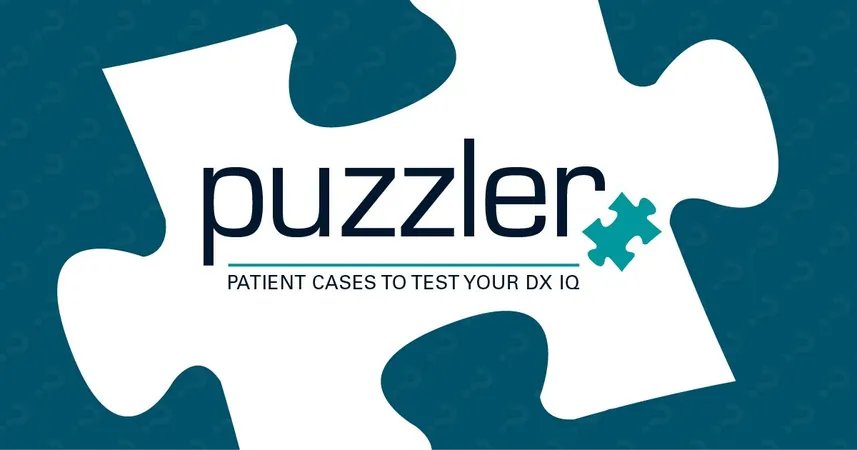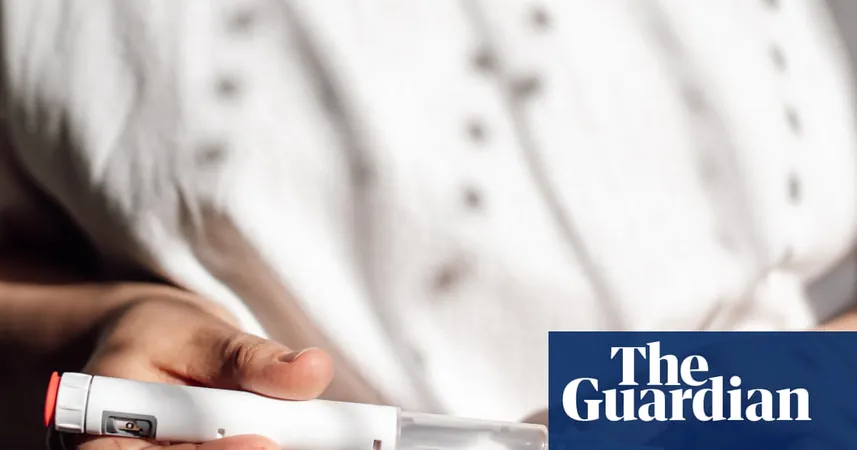
A Fight for Survival: The Plight of a Preterm Baby Battling Neonatal Sepsis
2025-09-10
Author: Daniel
The Neonatal Battle Begins
In a gripping case that underscores the fragility of newborns, a baby girl born at just 32 weeks and 6 days, weighing 1970 grams, faced immediate challenges after a meconium-stained vaginal delivery to a 37-year-old mother who had recently immigrated from India. The mother experienced preterm premature rupture of membranes (PPROM) 11 hours before delivery, raising concerns from the outset.
Despite the apprehension, the infant initially appeared vigorous, scoring 8 on the Apgar scale at both 1 and 5 minutes. However, soon after birth, she showed signs of respiratory distress, requiring CPAP support and supplemental oxygen.
Initial Assessments and Findings
Upon arrival in the NICU, the baby's vital signs revealed stable but concerning readings. A mild respiratory effort persisted, with intermittent tachypnea noted. Blood cultures taken within the first 18 hours returned shockingly positive for gram-negative rods, hinting at early onset sepsis—a potentially life-threatening condition.
The Differential Diagnosis Dilemma
Observing the infant’s symptoms—a mix of preterm birth, respiratory distress, and abnormal blood cultures—physicians listed several potential diagnoses. Early-onset sepsis was high on the list, with common culprits including E. coli. Notably, E. coli accounts for nearly half of the cases in the U.S., putting the baby at significant risk.
Unveiling the Culprit: E. coli with a Dangerous Twist
The laboratory confirmed the formidable strain of E. coli was producing extended-spectrum beta-lactamases (ESBL), making it resistant to key antibiotics like ampicillin and gentamicin—often the first line of defense against such infections. ESBL infections have escalated in severity and frequency, particularly among newborns born to mothers from high-risk regions.
Navigating the Treatment Terrain
In light of the dire situation, pediatric infectious disease specialists revamped the antibiotic regimen to include meropenem, a broader-spectrum option, within the first 24 hours. Remarkably, the infant's condition began to stabilize, with a negative blood culture emerging by day three.
Hope in the NICU: A Journey of Recovery
Over the ensuing weeks, the baby remained on noninvasive respiratory support and gradually improved, ultimately demonstrating resilience by breathing independently by five weeks of age. Though she faced complications such as mild hyperbilirubinemia and anemia, her discharge at 46 days post-birth marked a significant victory.
A Stark Reminder of the Risks of Neonatal Sepsis
This case serves as a sobering reminder of the dangers of neonatal sepsis, which claims approximately 203,000 lives each year globally. The alarming rise in ESBL infections underscores the need for heightened awareness and prompt antibiotic adjustments in vulnerable populations. The swift initiation of appropriate treatment in this baby’s case was indeed life-saving and illustrates the critical importance of vigilance in treating and managing neonatal infants.



 Brasil (PT)
Brasil (PT)
 Canada (EN)
Canada (EN)
 Chile (ES)
Chile (ES)
 Česko (CS)
Česko (CS)
 대한민국 (KO)
대한민국 (KO)
 España (ES)
España (ES)
 France (FR)
France (FR)
 Hong Kong (EN)
Hong Kong (EN)
 Italia (IT)
Italia (IT)
 日本 (JA)
日本 (JA)
 Magyarország (HU)
Magyarország (HU)
 Norge (NO)
Norge (NO)
 Polska (PL)
Polska (PL)
 Schweiz (DE)
Schweiz (DE)
 Singapore (EN)
Singapore (EN)
 Sverige (SV)
Sverige (SV)
 Suomi (FI)
Suomi (FI)
 Türkiye (TR)
Türkiye (TR)
 الإمارات العربية المتحدة (AR)
الإمارات العربية المتحدة (AR)